List your propertySupportTrips Learn about Expedia Rewards
Learn about Expedia Rewards
Members save 10% or more on over 100,000 hotels worldwide when you’re signed in
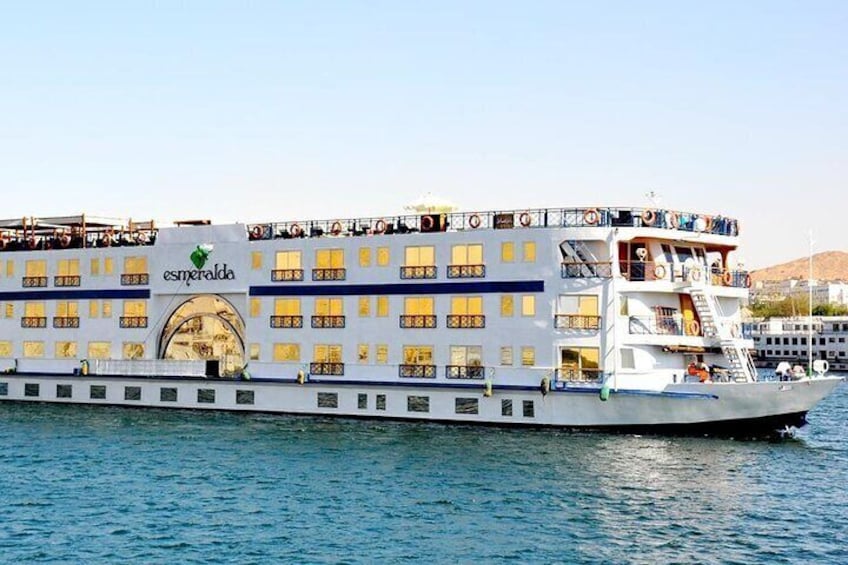
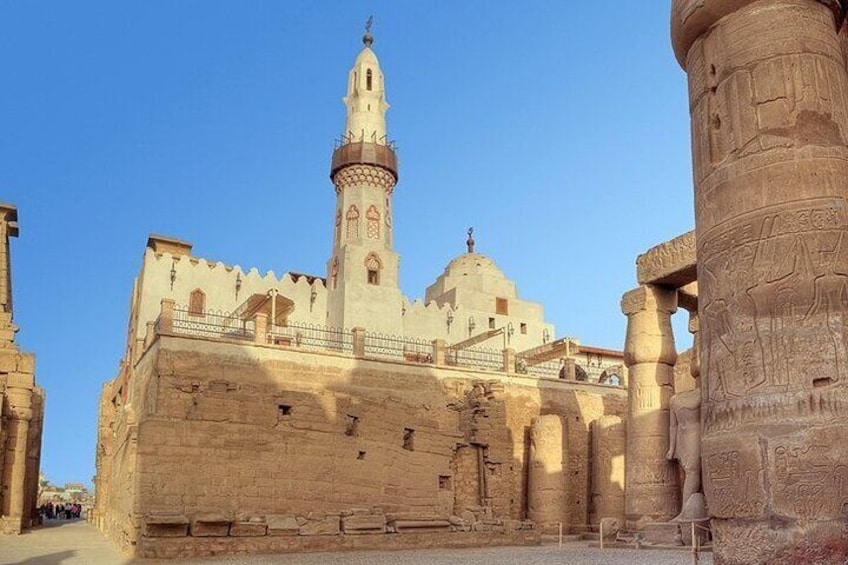
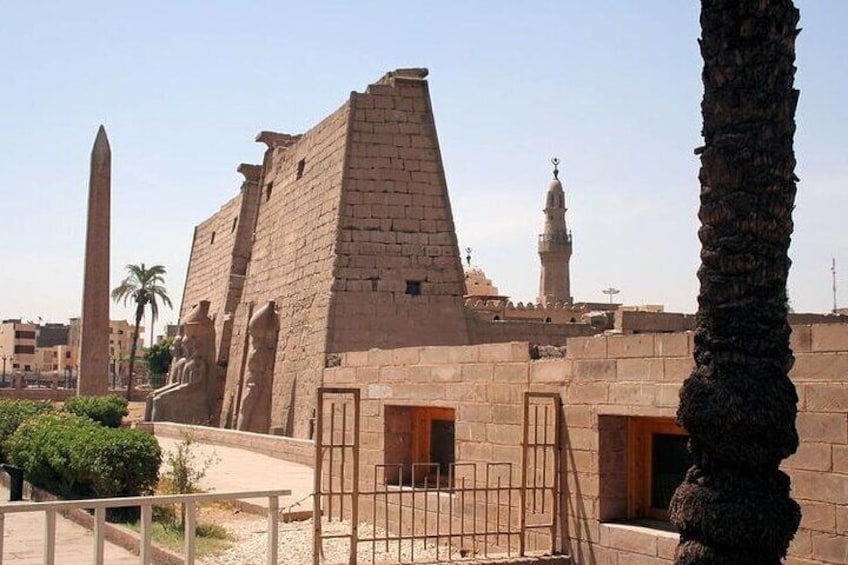
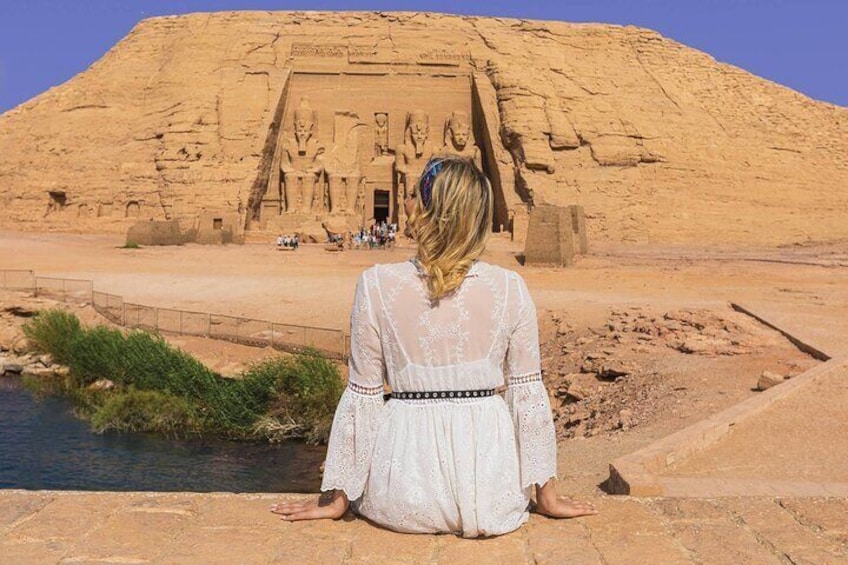
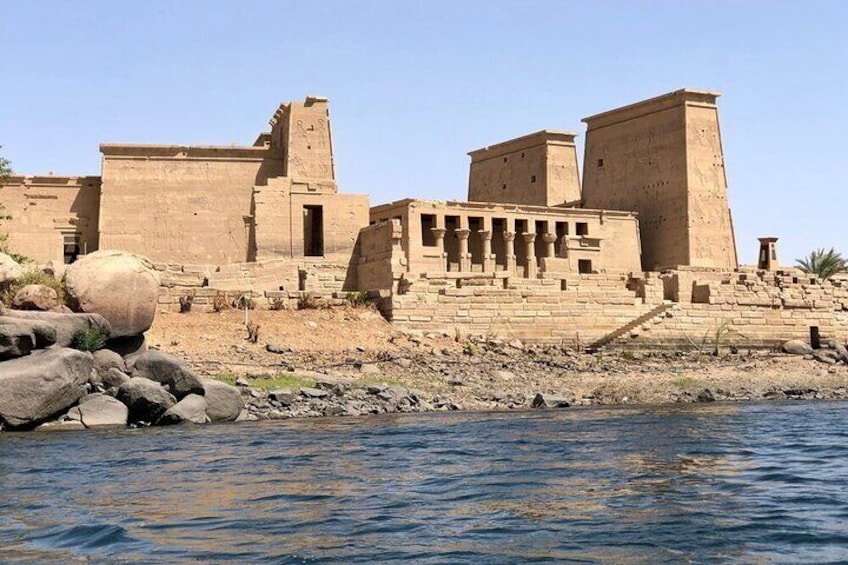
3-Nights Cruise From Aswan,Aswan and Luxor Temples & Tours With Balloon
By Book Your Tours
Free cancellation available
per adult*
*Get a lower price by selecting multiple adult tickets
Features
- Free cancellation available
- 4d
- Mobile voucher
- Instant confirmation
- Selective hotel pickup
- Multiple languages
Overview
Cruise the Nile River from Aswan to Luxor on a 5-star cruise that explores the ancient highlights of the Upper Nile. From the Temple of Philae to Kom Ombo Temple and the Valley of the Kings, discover royal tombs to temples. An included sunrise hot-air balloon flight above Luxor’s magnificent West Bank helps take in the scale of the ancient settlement, and onboard entertainment ensures a lively cruise. Discover one of the most impressive temples in Egypt by visiting Abu Simbel 285 km south of Aswan.
-Enjoy personal service from Aswan arrival to Luxor departure
-Included meals and activities take care of logistics
-5-star accommodation mean a comfortable trip aboard
-Hot-air balloon experience goes beyond standard trip itineraries
Activity location
- Aswan
- Aswan, Egypt, Egypt
Meeting/Redemption Point
- Aswan
- Aswan, Egypt, Egypt
Check availability
3-Nights Cruise From Aswan,Aswan and Luxor Temples & Tours With Balloon
- 4d
- English
Pickup included
Price details
£719.47 x 1 Adult£719.47
Total
* Select 2 adult tickets to get our lowest price of £522.39 per adult
What's included, what's not
- Meals start with lunch end with breakfast last day.
- Egyptology tour guide.
- Motor boat.
- 5 stars Nile cruise for 3 nights from aswan to luxor
- Free Wi-Fi up to 4 GB
- Horse and carriage.
- Cabin with all facilities.
- All sites which mentioned in itinerary.
- Pickup and drop off by air conditioning mini bus
- Taxes and charges.
- Service charge
- Entrance Fees
- Any extras not mentioned in the itinerary
Know before you book
- Specialised infant seats are available
- Public transport options are available nearby
- Infants and small children can ride in a pram or stroller
- All areas and surfaces are wheelchair accessible
- Transport options are wheelchair accessible
- Suitable for all physical fitness levels
- Wheelchair accessible
- In accordance with UK consumer law, activities services are not subject to the right of withdrawal. Supplier cancellation policy will apply.
- This activity is provided by a professional trader (a party acting within their trade, business or profession).
Activity itinerary
Day 1: Pick Up From Aswan & Visit Temple Of Philae & Aswan High Dam
- 3 stops
- Meals: lunch, snacks
- Accommodation: Accommodation at 5 Stars Nile Cruise Boat
Aswan
We will pick you up from any hotel in Aswan or Aswan Airport or Train Station
Temple of Philae
- 2h
- Admission ticket not included
Philae Island is an island in the middle of the Nile River and it is one of the strongest forts along the southern borders of Egypt, separating the Nile into two opposite canals in Aswan. . The name Philae or Velay refers to the Greek language which means (the beloved) or (the beloved). As for the Arabic name for it, it is the Anas of existence in relation to the myth of Anas found in the stories of One Thousand and One Nights. Egypt is in the south. And the worship group was devoted to the worship of the goddess Isis, but the island contained temples of Hathor, Amenhotep and other temples.
Aswan High Dam
- 2h
- Admission ticket not included
A water dam on the Nile River in southern Egypt, built during the reign of Gamal Abdel Nasser, and the Soviets helped build it. It helped a lot in the impact of the effects of the Nile. Used to generate electricity in Egypt. The length of the dam is 3600 metres, the width of the base is 980 metres, the width of the summit is 40 metres, and the height is 111 metres. The volume of the dam’s body is 43 million cubic metres of water per second. Construction of the dam began in 1960, with an estimated capacity of one billion dollars, a third of which was written off before the Soviet Union. 400 Soviet experts worked on building the dam and completed its construction in 1968. The last 12 generators were installed in 1970 and the dam was officially opened in 1971.
Day 2: Abu Simbel Temples & Sailing To Temple Of Kom Ombo
- 2 stops
- Meals: breakfast, lunch, snacks
- Accommodation: Accommodation at 5 Stars Nile Cruise Boat
Abu Simbel Temple Complex
- 7h
- Admission ticket not included
Abu Simbel is an archaeological site located on the west bank of Lake Nasser, about 290 km southwest of Aswan. It is one of the "monuments of Nubia" listed on the UNESCO World Heritage List. And that starts from the direction of the flow of the river from Abu Simbel to Philae (near Aswan).
The twin temples were originally carved from the mountains during the reign of King Ramses II in the thirteenth century BC, as a permanent monument to him and Queen Nefertari, to commemorate his victory in the Battle of Kadesh. However, in 1960 the facility complex was completely moved to another location, on an artificial hill made of a dome structure, and over the Aswan High Dam reservoir.
It was necessary to relocate the temples to avoid them being submerged during the construction of Lake Nasser.
Temple of Kom Ombo
- 2h
- Admission ticket not included
The Kom Ombo Temple is located in Kom Ombo in the Aswan Governorate, southern Egypt. The temple was established during the reign of Ptolemy VI to worship the gods Sobek and Horus. The temple area has recently been restored and renewed. This temple was established during the reign of Ptolemy VI Philomator, but its decoration was only completed in the Roman era during the time of Emperor Tiberius, and we see in this temple also the same features that we find in other Ptolemaic Egyptian temples in terms of design, architecture and decoration. However, this temple has a special feature that resulted in local worship in the place, where people worshiped two local deities, namely Sobek and Horus with the head of a falcon, and despite the difference between these two deities in origin and character, they lived side by side for long centuries without mixing or pairing us Together
Day 3: Temple Of Edfu & Continue Sailing To Luxor To Visit Luxor Temple
- 2 stops
- Meals: breakfast, lunch, snacks
- Accommodation: Accommodation at 5 Stars Nile Cruise Boat
Temple of Horus
- 2h
- Admission ticket not included
The Temple of Edfu is an Egyptian temple located on the west bank of the Nile in Edfu, Upper Egypt. The city was known in the Hellenistic period in Koinē Greek: Ἀπόλλωνος πόλις and in Latin as Apollonopolis Magna, after the chief god Horus, who was identified as Apollo under the interpretatio graeca.[1] It is one of the best preserved shrines in Egypt. The temple was built in the Ptolemaic Kingdom between 237 and 57 BC. The inscriptions on its walls provide important information on language, myth and religion during the Hellenistic period in Egypt. In particular, the Temple's inscribed building texts "provide details [both] of its construction, and also preserve information about the mythical interpretation of this and all other temples as the Island of Creation."[2] There are also "important scenes and inscriptions of the Sacred Drama which related the age-old conflict between Horus and Seth."[3] They are translated by the German Edfu-Project
Luxor Temple
- 1h 30m
- Admission ticket not included
The Luxor Temple is a large complex of ancient Egyptian temples located on the eastern bank of the Nile River in the city of Luxor today known as (Thebes ancient). Founded in 1400 BC. The Luxor Temple was built to worship Amun-Ra, his wife Mut, and their son Khonsu. They are the gods, which are also called the Theban Triad (Theban Triad). Luxor Temple was built during the reign of the kings of the Eighteenth Dynasty and the Nineteenth Dynasty. The most important buildings in the temple are those that were built by Kings Amenhotep III (1397-1360 BC) and Ramses II (1290-1223 BC) (who added to the temple the open courtyard, the edifice, and the obelisks). Also, King Thutmose III (1490-1436 BC) set up shrines for visitors of the holy Theban Triad.
Day 4: Enjoy Visiting Kings Valley, Hatshbsut Temple, Colossi Of Memnon, Temple Of Karnak, Balloon
- 5 stops
- Meals: breakfast, lunch
- Accommodation: Not included
Valley of the Kings
- 1h 30m
- Admission ticket not included
The Valley of the Kings, also known as "The Valley of the Kings", is a valley in Egypt that was used for 500 years during the period between the sixteenth and eleventh centuries BC to construct tombs for the pharaohs and nobles of the modern state extending during the eighteenth dynasties to the twentieth dynasty in ancient Egypt. The valley on the west bank of the Nile River facing Thebes (Luxor now) in the heart of the ancient funerary city of Thebes. The Valley of the Kings is divided into two valleys; The Eastern Valley (where most of the royal tombs are located) and the Western Valley. And with the discovery of the last burial chamber in 2006, known as (Cemetery 63), in addition to the discovery of two other entrances to the same chamber during 2008.
Temple of Hatshepsut at Deir el Bahari
- 1h
- Admission ticket not included
The Temple of Hatshepsut or the mortuary temple of Hatshepsut is a temple from the Eighteenth Dynasty of Egypt, and the best remaining temples were built about 3500 years ago in Deir el-Bahari, Egypt. It was built by Queen Hatshepsut on the west bank of the Nile opposite to Thebes (the capital of ancient Egypt and the seat of the Amun worship) (Luxor today). The Temple of Hatshepsut is distinguished by its unique architectural design, in comparison to the Egyptian temples that were built on the eastern bank of the Nile at Thebes. The temple consists of three successive floors with open terraces. The temple was built of limestone, and in front of the second floor columns were erected limestone statues of the god Osiris and Queen Hatshepsut in a beautiful distribution. Originally, those statues were coloured, and now only some monuments remain of the colours, and some statues are in very good condition, indicating the elegance and beauty of the temple's design.
Colossi of Memnon
- 30m
Colossus of Memnon, known locally as (Al-Kulsat or Salamat), is two huge statues, built around the year 1350 BC, which are all that remains of a temple built in memory of Pharaoh Amenhotep III, who ruled Egypt during the eighteenth dynasty, located in the funeral city of Thebes Located west of the Nile in the present-day city of Luxor, the two identical statues depict Amenhotep III (14th century BC) seated, hands spread on his knees and looking eastward (in fact towards the southeast in modern directions) towards the river. Two short figures are carved on the front of the throne, along with his legs: his wife Tiye and his mother Death M and Ya. The side panels depict the Nile god Habi.
The statues were made from blocks of quartzite sandstone that were quarried from Jabal al-Ahmar (near present-day Cairo) and transported 675 km (420 mi) overland to Thebes (Luxor).
Temple of Karnak
- 2h
- Admission ticket not included
Karnak, or the Karnak Temple Complex, which is known as the Karnak Temple, is a group of temples, buildings and columns, where the expansion and construction processes continued since the Pharaonic era, specifically the kings of the Middle Kingdom, until the Roman era in Luxor in Egypt on the eastern coast. The temple was built for the divine triad Amun (Amun Ra in the modern era), his wife the goddess Mut and their son the god Khonsu; And each of them has a temple belonging to the Karnak Temples Complex. The temple was named with this name in relation to the city of Karnak, and it is a modern name that is distorted from the Arabic word Khurang, meaning the fortified village, which was given to many temples in the area during this period. While the temple was known in the beginning as "Bar Amun", meaning the temple of Amun or Betamun, and during the Middle Kingdom it was called the name Ibt Sut, which means the most chosen of places (sometimes translated as the chosen spot)
Hot Air Balloons Luxor
- 1h
- Admission ticket included
Hot Air Balloon Trip
Location
Activity location
- Aswan
- Aswan, Egypt, Egypt
Meeting/Redemption Point
- Aswan
- Aswan, Egypt, Egypt
Best Deals on Things to Do
Experience the wonders of the world up close with great deals on things to do near and far. Expedia offers one-of-a-kind activities that allow you to explore Aswan your way. Whether you love nature, culture, food or a bit of adventure, we have the perfect activity for you.
Top experiences in Aswan
With so many things to do in Aswan, planning the perfect day out may seem like a daunting task. Expedia is here to take the hassle out of finding the best attractions, tours and activities in Aswan. Families, couples and business travellers can all find the perfect activity in Aswan to create life-long memories with the help of Expedia.